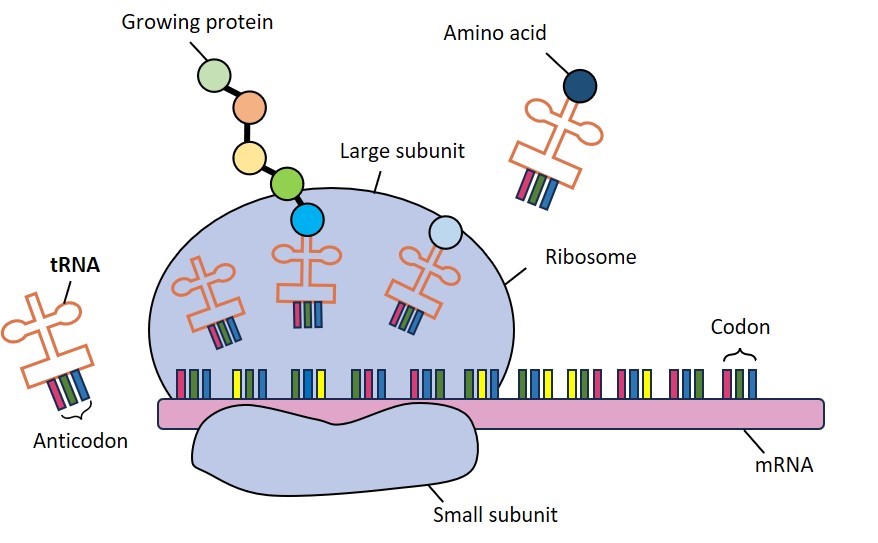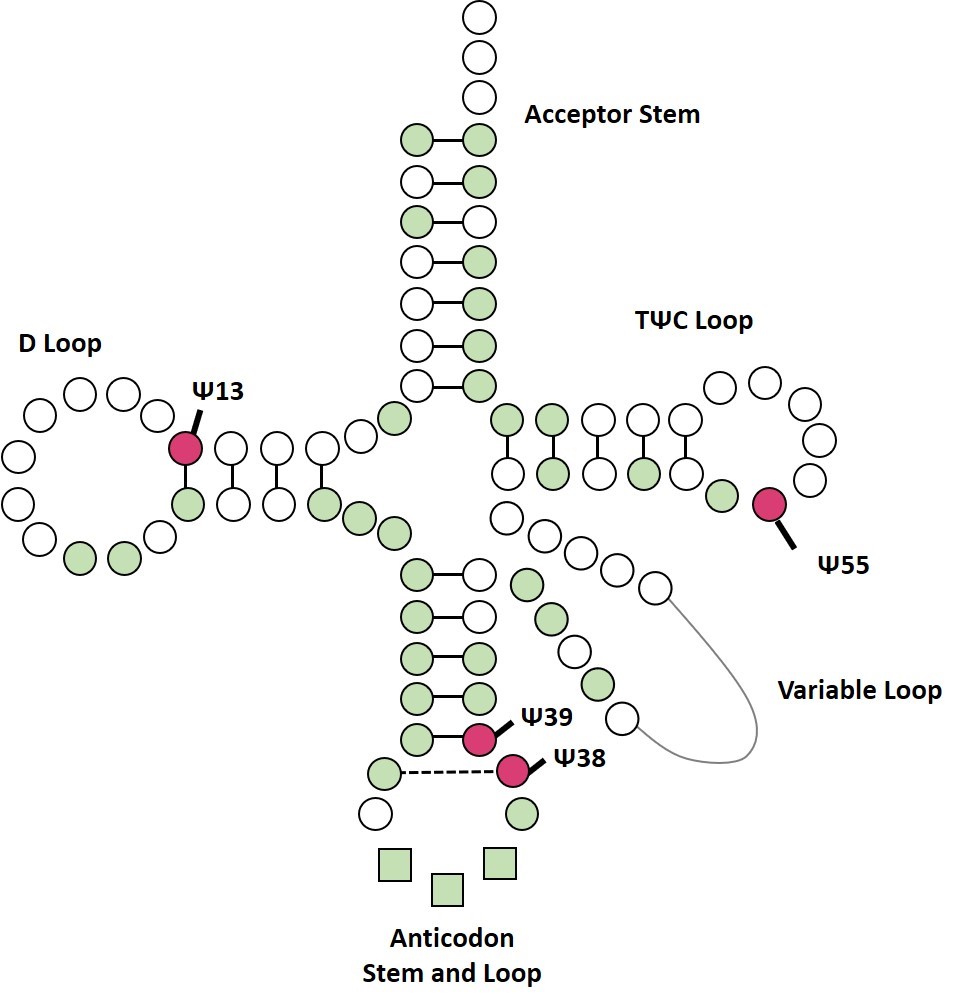The Structure and Function of tRNA
Transfer RNA, also abbreviated as tRNA, is a clover-shaped RNA consisting of 76-90 nucleotides, the 3' end of which can be catalyzed by amido-tRNA synthetase to attach specific types of amino acids. tRNA's main role is to carry amino acids into the ribosome and synthesize proteins under the guidance of mRNA. In the process of protein translation, tRNA can recognize the codon on mRNA by its own anticodon and transfer the amino acid corresponding to the codon to the polypeptide chain in ribosome synthesis.
 Figure 1. tRNA involved in protein translation process.
Figure 1. tRNA involved in protein translation process.
PseudoUridine Modifications in tRNA
In cells, the process of pseudouridine modification of tRNA is highly regulated and involves the participation of multiple genes and regulatory factors. Pseudouridine modification modifications are important for maintaining normal cellular biological functions and the accuracy of protein translation processes.
- Biological Function of PseudoUridine Modifications in tRNA
- Improved stability: pseudouridine modifications protect tRNA from degradation by nucleases and enhance the folding ability of tRNA molecules to fundamentally avoid misplaced three-dimensional structure formation.
- More accurate translation: pseudouridine modification of tRNA can affect the interaction of tRNA with aminoacyl-tRNA synthetase (aminoacyl-tRNA synthetase), thus promoting correct amino acid selection and pairing, which is important in ensuring the accuracy of translation.
- Influence tRNA binding to ribosomes: Pseudouridine modifications are involved in regulating the binding affinity and rate of tRNA to ribosomes, which helps to ensure the correct positioning of tRNA to ribosomes and promotes a high precision translation process.
- Influence translation rate: tRNA pseudouridine modifications can influence the rate and process of translation by affecting the rate and kinetic properties of deconvolution.
- Common PseudoUridine Modification Sites in tRNA
- The modification site of Ψ13 (pseudouridine 13) is on the D loop of tRNA.
- The modification sites of Ψ39 (pseudouridine 39) and Ψ38 (pseudouridine 38) are located at the 39th and 38th nucleotide positions of the anticodon loop of tRNA, respectively.
- The modification site of Ψ55 (pseudouridine 55) is located at the 55th nucleotide position of the T loop of tRNA.
 Figure 2. The secondary structure of tRNA and the distribution of Ψ modification sites in tRNA.
Figure 2. The secondary structure of tRNA and the distribution of Ψ modification sites in tRNA.
- tRNA pseudoUridine synthase
tRNA pseudouridine synthases catalyze the process of converting specific adenine (A) bases to pseudouridine (Ψ), thereby introducing pseudouridine modifications on tRNA molecules.
tRNA uridine ⇌ tRNA pseudouridine
- TruA family enzymes catalyze tRNA Ψ39 modification, introducing pseudouridine modification in the anticodon loop of tRNA.
- TruB family enzymes catalyze the Ψ55 modification of tRNA. They introduce the pseudouridine modification at the 55th nucleotide position in the T loop of tRNA.
- TruD family enzymes catalyze Ψ13 modification of tRNA, introducing pseudouridine modification in the D loop of tRNA.
- Pus family enzymes are a large family of tRNA pseudouridine synthases that include several isoforms, such as Pus1, Pus4, Pus7, etc.
Application of tRNA PseudoUridine Modifications
- Potential biomarkers for disease diagnosis and monitoring
- Potential tools and drugs to correct diseases associated with protein translation abnormalities
- Gene therapy & vaccine development
- Antibiotic development - some antibiotics can exert antibacterial effects by interfering with the tRNA pseudouridine modification process
